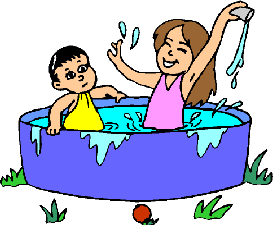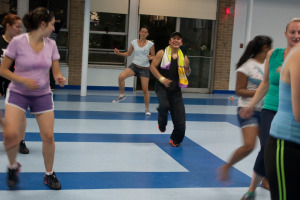Keep them informed of where you are going and when you will be home. Let them know if you are staying out overnight.
Author Archives: Maralyn Steeg
Healthy Eating — Downsizing Your Portions
 How much you eat is as important as what you eat. The US is known for its “supersizing”, especially in restaurants. It’s Ok to ask for a to-go box and take home that food you couldn’t finish at the restaurant. Rent the movie “Supersize Me”.
How much you eat is as important as what you eat. The US is known for its “supersizing”, especially in restaurants. It’s Ok to ask for a to-go box and take home that food you couldn’t finish at the restaurant. Rent the movie “Supersize Me”.
August 1 –Ramadan Begins
Celebrated during the ninth month of Islamic calendar, the fast is observed each day from sunrise to sunset. Ramadan concludes with a 3-day festival known as “Eid” or “Eid ul-Fitr. The holiday marks the end of the holy month of fasting and is a culmination of the month-long struggle towards a higher spiritual state.
Nothing is Private on the Internet
Remember that any email you send or receive and websites you have visited can be accessed by others. And watch what you post on social networking sites. Nothing on the computer is truly private!
When an Au Pair travels with her Host Family
If an au pair travels with her host family as part of her child care responsibilities, it is strongly recommended that a schedule be discussed in advance. Host families need to think about how they will divide child care responsibilities between themselves and their au pair. It is important to remember that the au pair may need orienting to a new setting and that the host family is responsible for her lodging and meals while she is traveling with the family.
A Perfect Night for Fireworks
 On July 20th, several Westchester clusters gathered at Oakland Beach to enjoy a beautiful summer evening socializing with old and new friends and a lovely display of fireworks. Judging by the smiling faces, everyone had a great time!
On July 20th, several Westchester clusters gathered at Oakland Beach to enjoy a beautiful summer evening socializing with old and new friends and a lovely display of fireworks. Judging by the smiling faces, everyone had a great time!

Here’s the link to see more photos: http://s791.photobucket.com/albums/yy197/MS-APIA/July%202011%20Fireworks/?albumview=slideshow
It's Blueberry Season!
Pick your own or buy them at the market. Put some on your morning cereal or make blueberry pancakes for a yummy weekend breakfast. Blueberry muffins are a delicious treat any time of day. Or try your hand at making a blueberry cobbler – here’s a recipe that everyone will enjoy:
Easy Blueberry Cobbler Recipe
-
½ stick of butter or margarine
-
¾ cup sugar
-
1 cup flour
-
1 teaspoon baking powder
-
1 cup of milk
-
1 pint blueberries (rinsed and drained)
Preheat oven to 350 degrees F. Melt butter and pour into a 3 quart casserole baking dish. Mix sugar, flour and milk. Pour over the butter, but do not mix. Pour the blueberries on top, but do not mix. Bake at 350 degrees F for one hour. Serve with or without ice cream.
Are you a Safe Driver?
Much of safe driving is concentrating on driving, avoiding distractions, and applying patience. Which lane is best to drive depends on traffic conditions. In general, on a  two-lane parkway use the right lane for cruising (slower driving) and the left lane for passing. When there are three or more lanes, the right lane should be used by lower speed traffic, the left lane for passing, and the center lane for cruising. Do not be distracted or slow down excessively to look at incidents in or near the roadway. This adds to congestion and increases the potential for additional incidents.
two-lane parkway use the right lane for cruising (slower driving) and the left lane for passing. When there are three or more lanes, the right lane should be used by lower speed traffic, the left lane for passing, and the center lane for cruising. Do not be distracted or slow down excessively to look at incidents in or near the roadway. This adds to congestion and increases the potential for additional incidents.
It's Hot Outside! Stay safe with these tips:
Dehydration The little ones, especially, forget to drink or to tell you that they need to drink. If you find the children not looking well and/or getting cranky toward the afternoon, it might be because they’re tired, or it might be because they’re dehydrated. Remember: By the time a person feels thirsty, he’s already partly dehydrated, so drink to prevent thirst, not to quench it. Common symptoms of dehydration are crankiness, headaches, aches in the joints and weariness. And don’t allow your child to fill up on juice or soft drinks; these are dehydrators. Water or child-appropriate hydrating drinks are best.
However, if you or your child has severe dehydration (dry mouth, sunken eyes, reluctant to drink, unable to pee or cry, high fever, lethargy), call for emergency help and have your child sip an electrolyte-replacement fluid (such as Pedialyte).
Hot Cars: Don’t EVER leave children alone in the car — not even for a moment. Besides the danger of abduction, the temperature in a car can skyrocket in minutes. And, if you see an unattended young child in a vehicle, please call 911, the police or other emergency personnel. Your call could save the child’s life.
 Drowning: Always actively supervise children in and around water. Infants and children can drown in bathtubs, swimming pools, ponds or almost any other water. Toddlers aren’t strong enough to lift themselves back out of a toilet, bucket, container or wading pool.
Drowning: Always actively supervise children in and around water. Infants and children can drown in bathtubs, swimming pools, ponds or almost any other water. Toddlers aren’t strong enough to lift themselves back out of a toilet, bucket, container or wading pool.
Sun Protection: Children’s skin and eyes are more sensitive to ultraviolet rays. Babies should be protected from direct sun entirely. Toddlers, preschoolers and older children should be covered well in sunscreen (SPF 30 or higher) at least one half hour before going out in the sun. Sunscreen should be reapplied every hour or so, and it should be reapplied after the child has been in water. Don’t forget ears, hands, feet, lips and under the eyes. Also, make sure your child wears a hat and sunglasses when out in the sun for any length of time.
Witness to Zumba Fitness
Our June 22nd Zumba Dance class with Gustavo was non-stop action from beginning to end. An evening of great  exercise, many laughs and a lot of fun was had by all.
exercise, many laughs and a lot of fun was had by all.
For a link to a slideshow of photos from this evening, click on the following link: http://s791.photobucket.com/albums/yy197/MS-APIA/22%20June%20Zumba%20Dance%20Class/?albumview=slideshow
